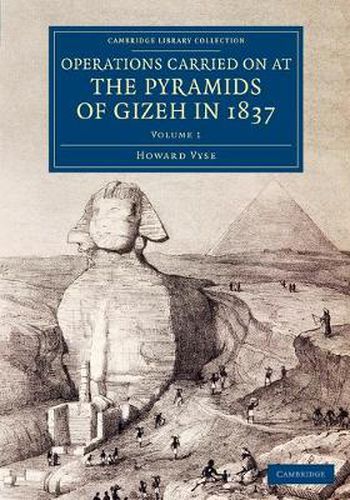Readings Newsletter
Become a Readings Member to make your shopping experience even easier.
Sign in or sign up for free!
You’re not far away from qualifying for FREE standard shipping within Australia
You’ve qualified for FREE standard shipping within Australia
The cart is loading…






An army officer and politician, Richard William Howard Vyse (1784-53) also made his mark as an Egyptologist. This three-volume work, published in 1840-2, has remained an instructive resource in Egyptology up to the present day. Adopting the style of a journal, with illustrations and diagrams throughout, it narrates in detail his excavations at Giza, surveying and measuring the pyramids. Following Vyse’s return to England, the work was continued by the engineer and surveyor John Shae Perring (1813-69). Vyse gives observations of his travels, and of the landscape, people and architecture he encountered, as well as details of the important work he carried out. Most notable was his discovery, using gunpowder, of four new chambers in the Great Pyramid containing ‘quarry marks’ - graffiti by the pyramid builders. Volume 1 (1840) covers the start of his travels in Egypt and the early excavations on the Great Pyramid.
$9.00 standard shipping within Australia
FREE standard shipping within Australia for orders over $100.00
Express & International shipping calculated at checkout
An army officer and politician, Richard William Howard Vyse (1784-53) also made his mark as an Egyptologist. This three-volume work, published in 1840-2, has remained an instructive resource in Egyptology up to the present day. Adopting the style of a journal, with illustrations and diagrams throughout, it narrates in detail his excavations at Giza, surveying and measuring the pyramids. Following Vyse’s return to England, the work was continued by the engineer and surveyor John Shae Perring (1813-69). Vyse gives observations of his travels, and of the landscape, people and architecture he encountered, as well as details of the important work he carried out. Most notable was his discovery, using gunpowder, of four new chambers in the Great Pyramid containing ‘quarry marks’ - graffiti by the pyramid builders. Volume 1 (1840) covers the start of his travels in Egypt and the early excavations on the Great Pyramid.